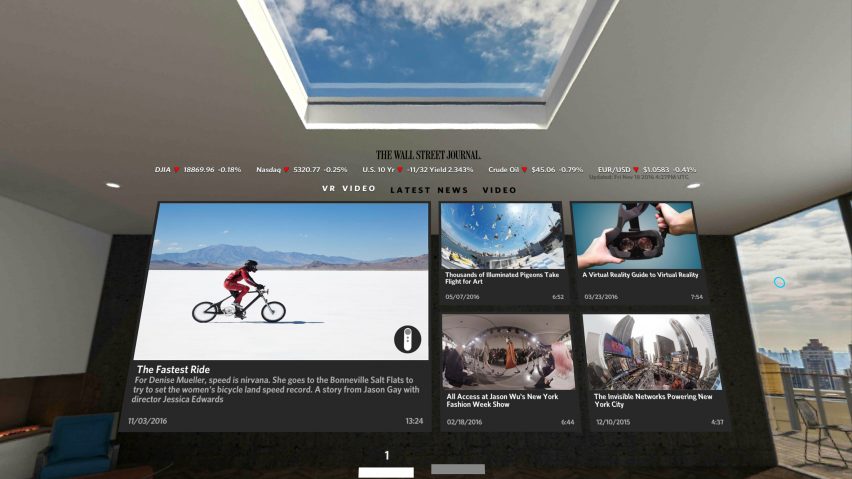Architecture firm Michaelis Boyd's latest apartment building only exists in a virtual-reality news app.
The Wall Street Journal app allows readers to see and interact with the publisher's content from the virtual comfort of a New York apartment.
Michaelis Boyd was tasked by the Wall Street Journal's Innovation Hub to design a virtual reality room where readers can see news, market reports and videos through Google's Daydream platform.
The only requirement for the design was that one wall would host an interactive screen where the user can access and interact with a live newsfeed.
"We designed the peripheral environment beyond the screen that users would be able to engage with on a 360-degree axis through the VR headset," Michaelis Boyd co-founder Alex Michaelis told Dezeen.
"The resulting room was a hybrid of other residential projects we have delivered showcasing architectural elements and views of the NY skyline – a backdrop for the VR space."
The architects began by designing the wireframe for the virtual room before selecting finishes and furniture. Then, a team from the Innovation Hub built the VR space according to the detailed designs.
When designing the space, the studio approached the project as if it were a regular built environment. The homes inside Battersea Power Station provided a starting point for the design, with the team basing interiors on ones they created at the iconic London site.
They also took elements from other residential and commercial projects in their portfolio – including Soho House clubs and the Groucho Club – and paired them with a "restrained" palette of materials.
Expansive windows look out onto the New York skyline – the city in which the Wall Street Journal is based.
Virtual reality's potential role in architecture and design has been much discussed, with visualisation artist Olivier Demangel of IVR Nation saying that the technology would become "more powerful than cocaine".
These predictions are now becoming more of a reality, with apps such as Google's Tilt Brush allowing designers to walk through their sketches in 3D as they draw them.
"I think the possibilities are enormous and the spaces will become more and more incredible – as long as the information screen is workable," said Michaelis. "VR gives us is a new abstract space that feels very real to the users."
"Although in its infancy, it will play a huge part in the future by giving clients lifelike walk-throughs and demos of projects, eliminating many of the misunderstandings inherent in design to give clients a clearer view on what they are getting."

